Viewpoints and observation towers let people rise above ground in order to enjoy breathtaking views of surrounding landscape. Rather than creating humble towers for their own sake, designers and architects develop sophisticated structures which are as spectacular as the views they provide.
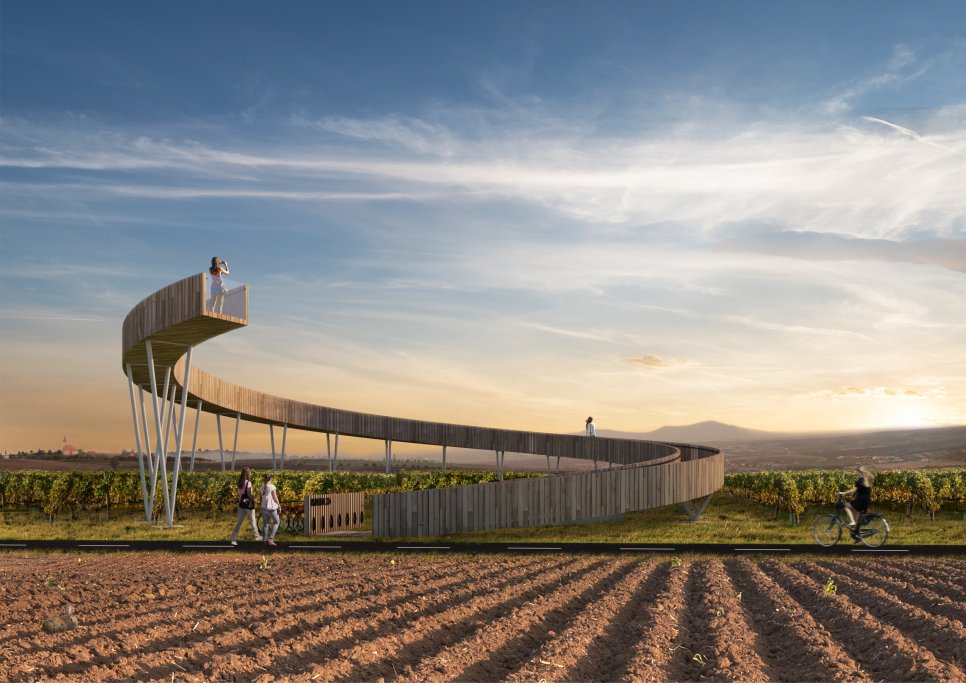
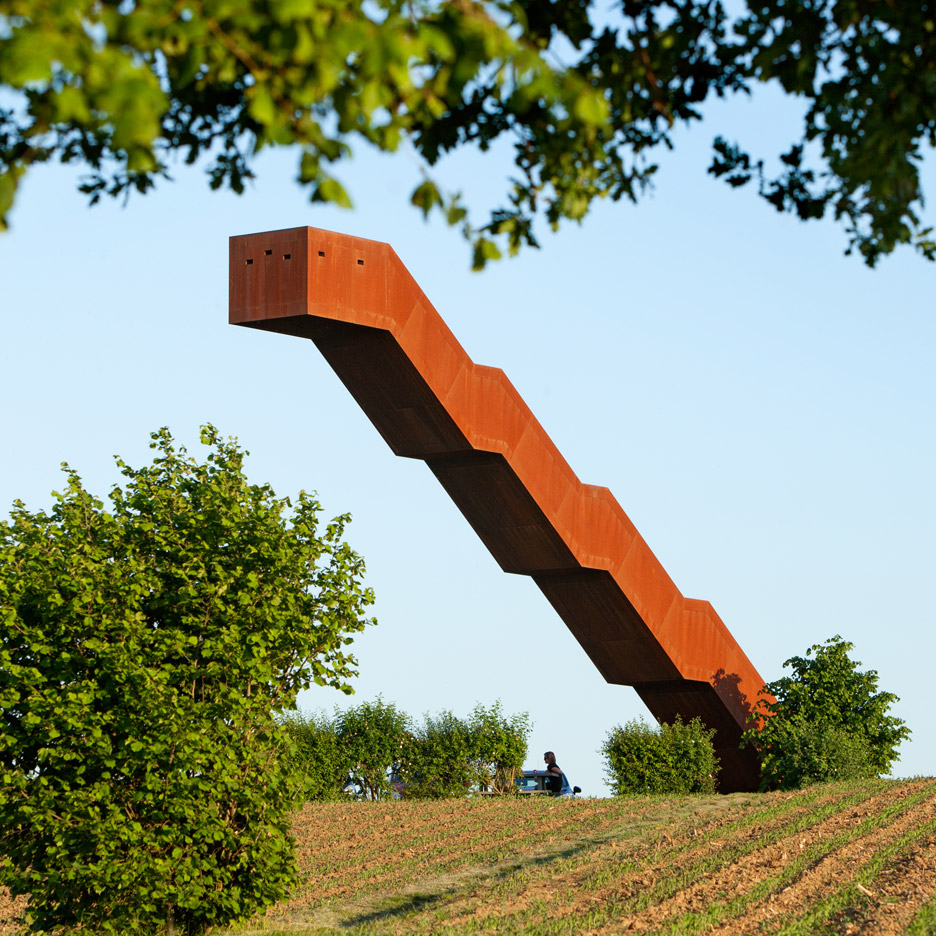
Vlooyberg Tower by Close to Bone (via dezeen)
Belgian engineering studio Close to Bone designed an observation tower known as Vlooyberg Tower. The 11.5 metres tall gravity defying staircase of weathering steel overlooks farmland and the Kabouterbos forest. At the summit of the tower there is a viewing platform with small peepholes in the tall balustrades framing the picturesque views of the region’s landscape.
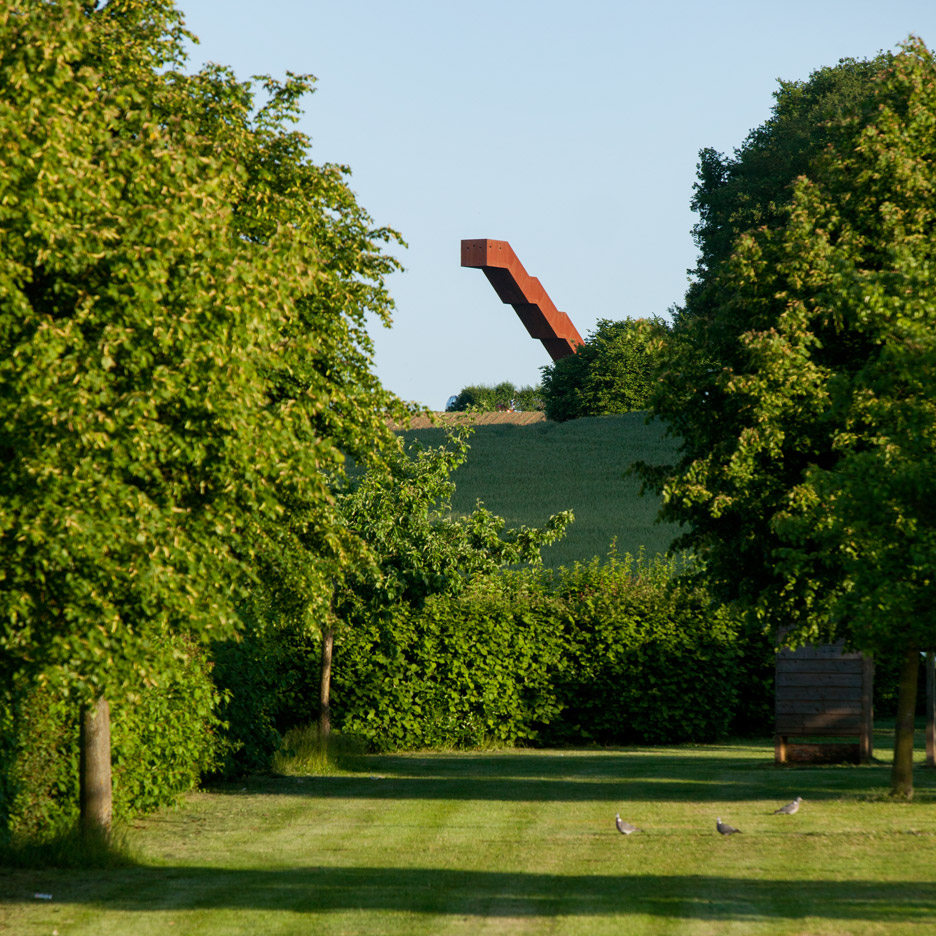
Vlooyberg Tower by Close to Bone (via dezeen)
The floating structure was built to replace a wooden lookout pots that was had been burnt by vandals. To withstand the ravages of time and prevent further acts of arson, the new tower is made of galvanized steel sections clad in sheets of pre-rusted metal, its rusty orange colour referencing the red-brown ironstone found in the region. According to the team, the resulting structure is a landmark with strong iconic value, literally and figuratively raising the profile of the beautiful region.
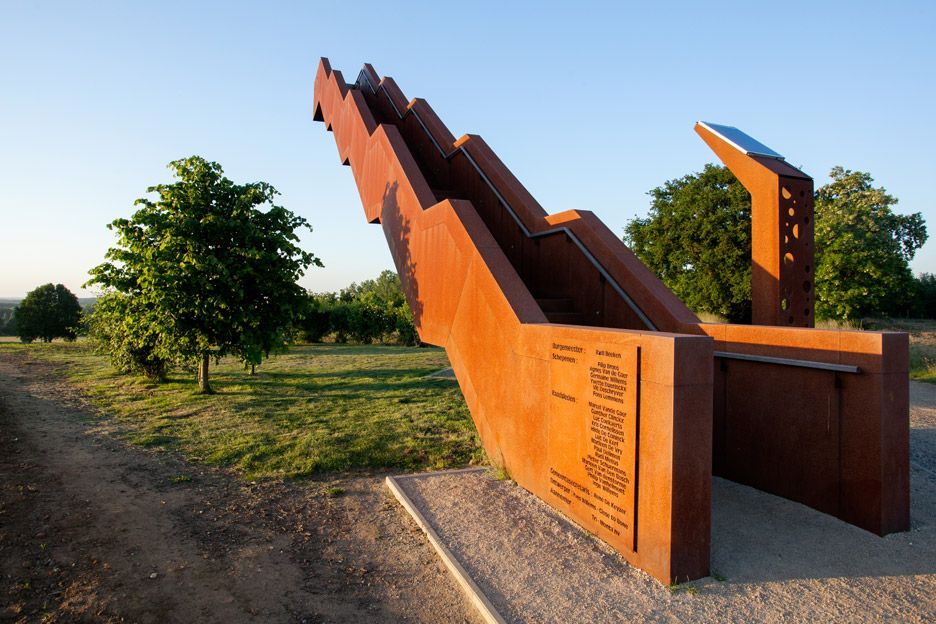
Vlooyberg Tower by Close to Bone (via dezeen)
Close to Bone’s engineers had to calculate the forces acting in each element of the staircase manually to construct the stable structure of 12 tonnes which won’t vibrate under foot. The tower was prefabricated and assembled on site over the course of half a day.
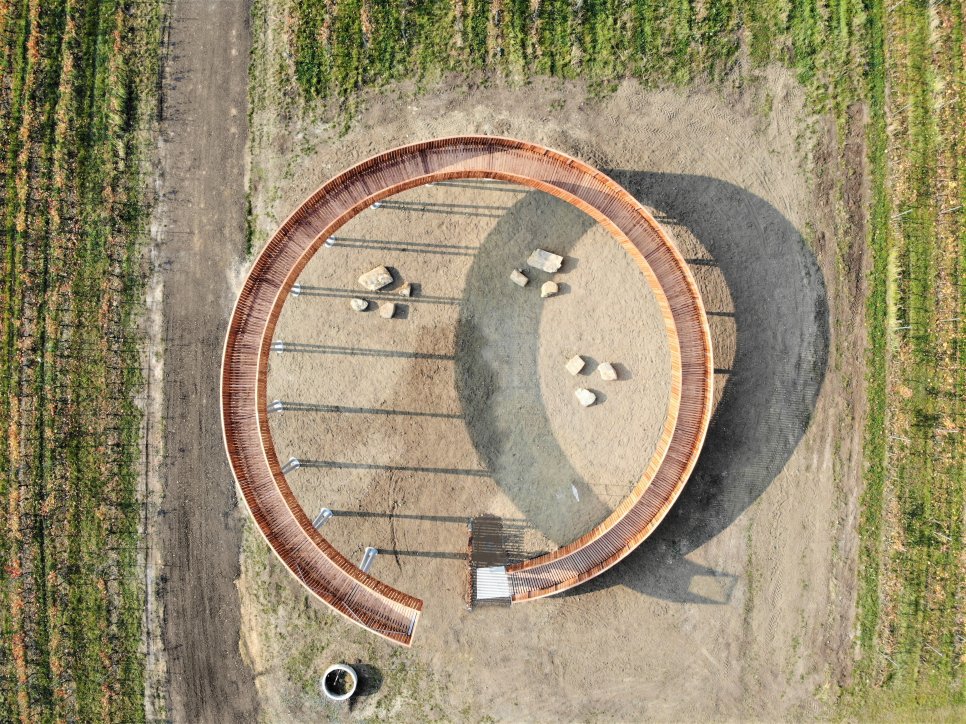
The Walk above the Vineyards viewpoint by Keeo4design (also header image)
Brno-based studio Keeo4design was commissioned by the local authorities of the Czech Republic’s South Moravian Region to design a viewpoint which would offer an elevated view over the vineyards on the summit of the Kobylí vrch hill. The resulting 7.6 metres high spiraling ramp entitled The Walk above the Vineyards provides a view of the Lednice-Valtice Cultural Landscape, the Little Carpathians mountain range, and as far as the Austrian Alps on a clear day.
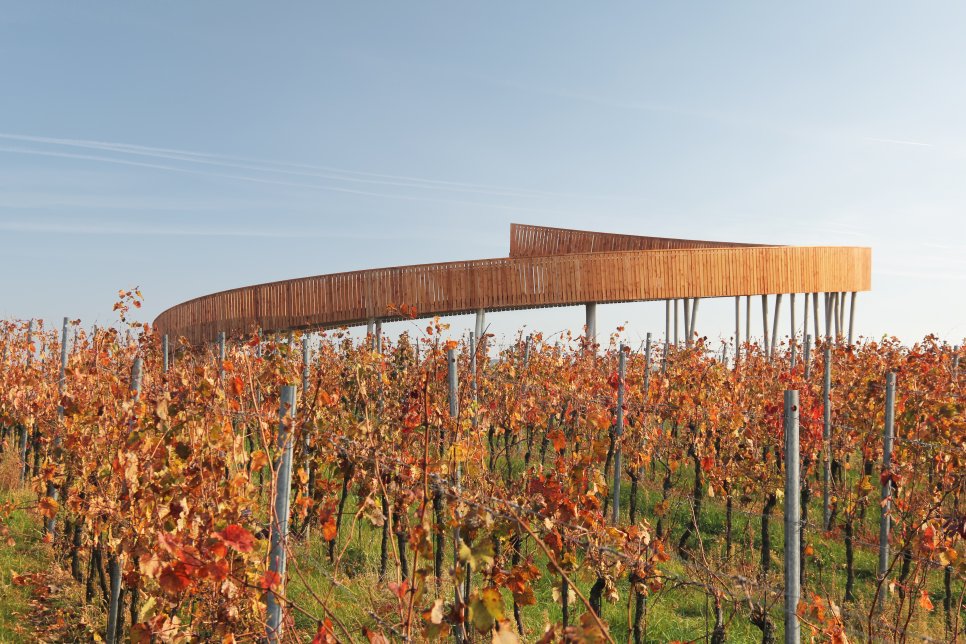
The Walk above the Vineyards viewpoint by Keeo4design
The circular design of the viewing platform intentionally reduces its visual impact on the beautiful surrounding landscape. Simultaneously its shape represents the natural circle of life as a symbolic reference to the growth of the Kobylí village. The ramp’s floor comprises over 500 wooden sections which create a gentle incline enabling people with limited mobility to access the observation point.
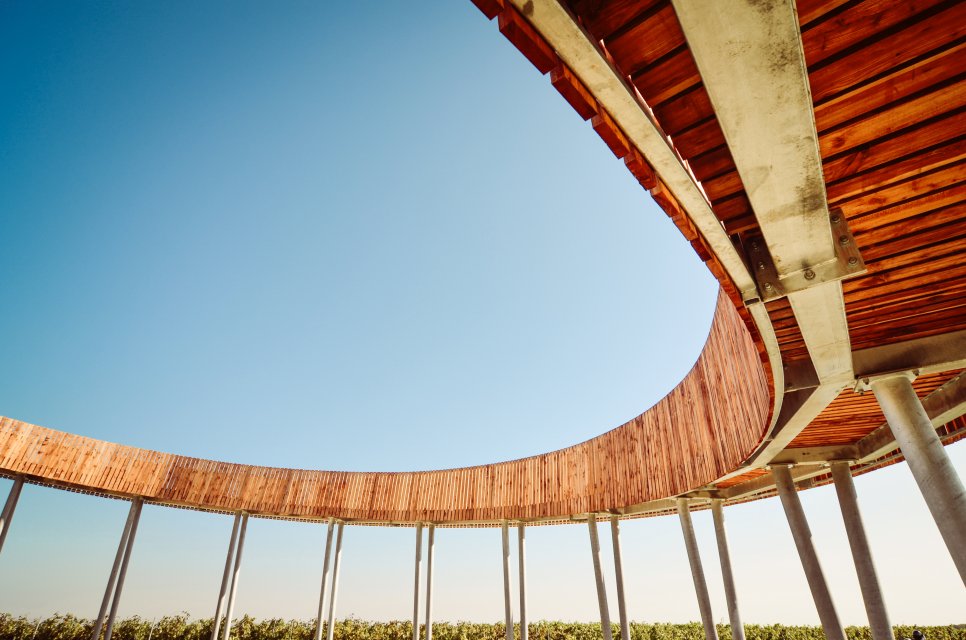
The Walk above the Vineyards viewpoint by Keeo4design
The walkway is supported by 19 slender steel double columns, which creates a feeling of the path floating above the landscape. This feeling is enhanced by the end section of the structure that is wrapped in a transparent balustrade and cantilevers out beyond the final pair of columns.
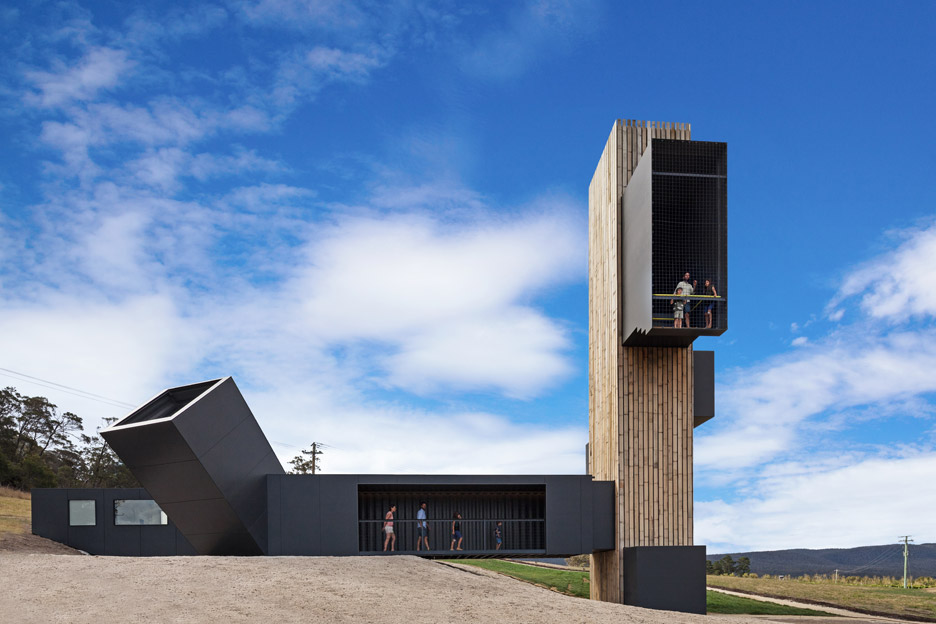
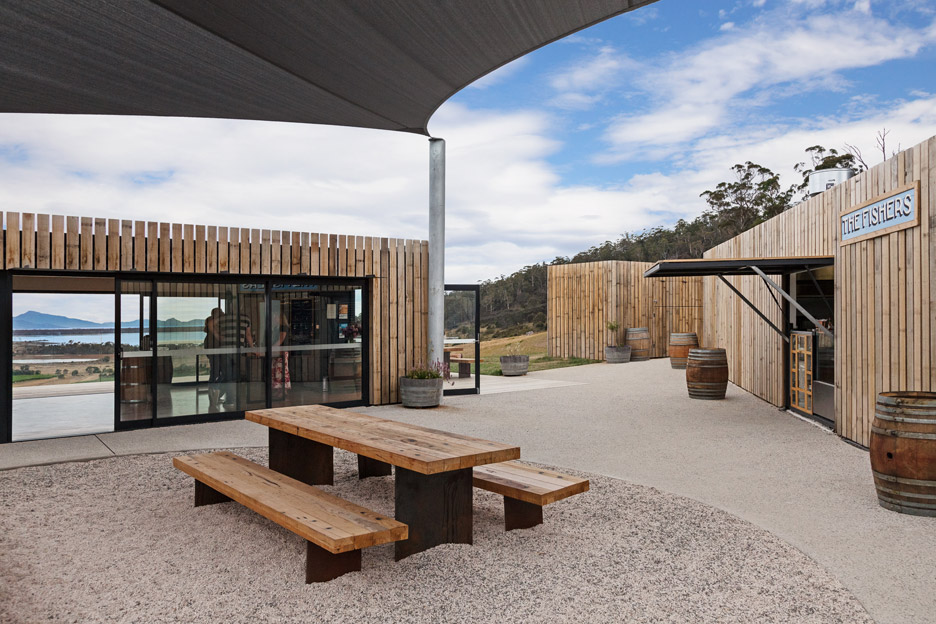
Devil’s Corner Lookout and Cellar Door by Cumulus Studio
Australian architecture practice Cumulus Studio has designed the visitor facilities named Devil’s Corner Lookout and Cellar Door for one of Tasmania’s largest vineyards. Through similar aesthetic and material treatment, the two structures constructed primarily from timber-clad shipping containers form a modern interpretation of a rural settlement. Visitors are invited into a semi-sheltered courtyard for wine and food sampling, where they can enjoy views of the Hazards, a range of granite peaks that loom over the Freycinet Peninsula.
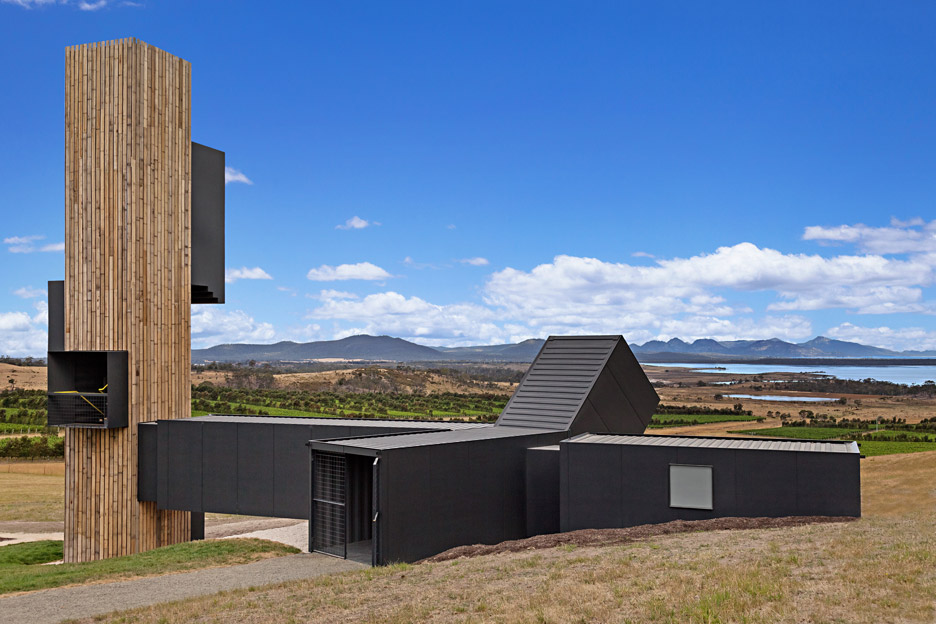
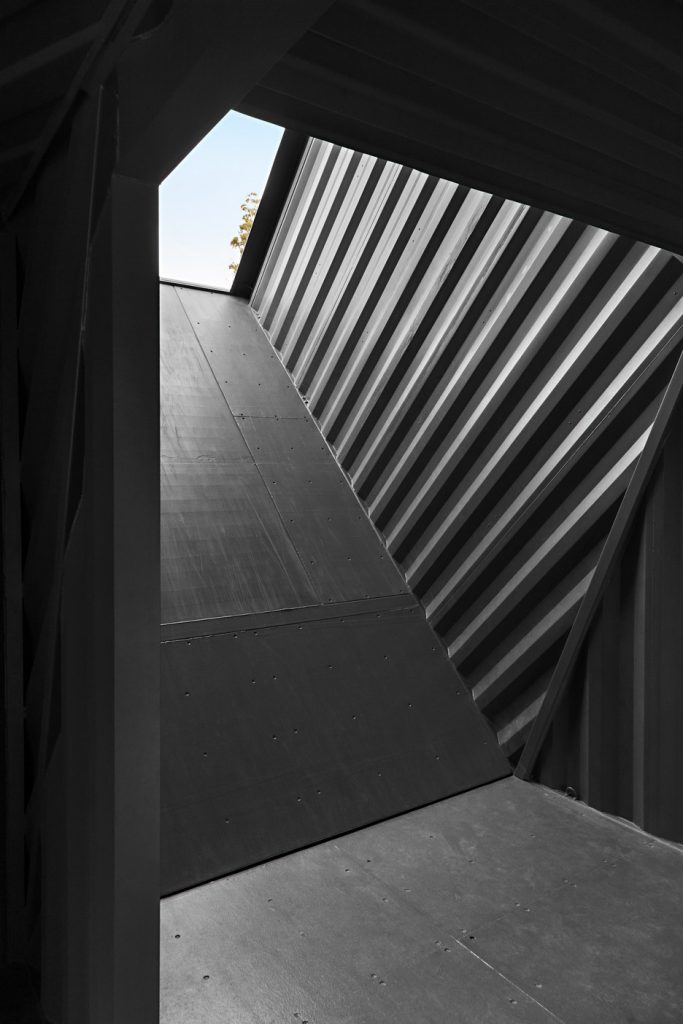
Devil’s Corner Lookout and Cellar Door by Cumulus Studio
The lookout plays with the idea that there are various ways the landscape can be perceived, just like an appreciation of wine can be gained through understanding its subtleties and ‘in-mouth’ sensations. The three distinct spaces reference different and unique views of the site. Firstly, the Sky represented by an angled box by the entrance which directs the gaze towards the sky; then the Horizon which can be appreciated from one of the metal balconies, and lastly the Tower culminating with the expansive view of the bay.
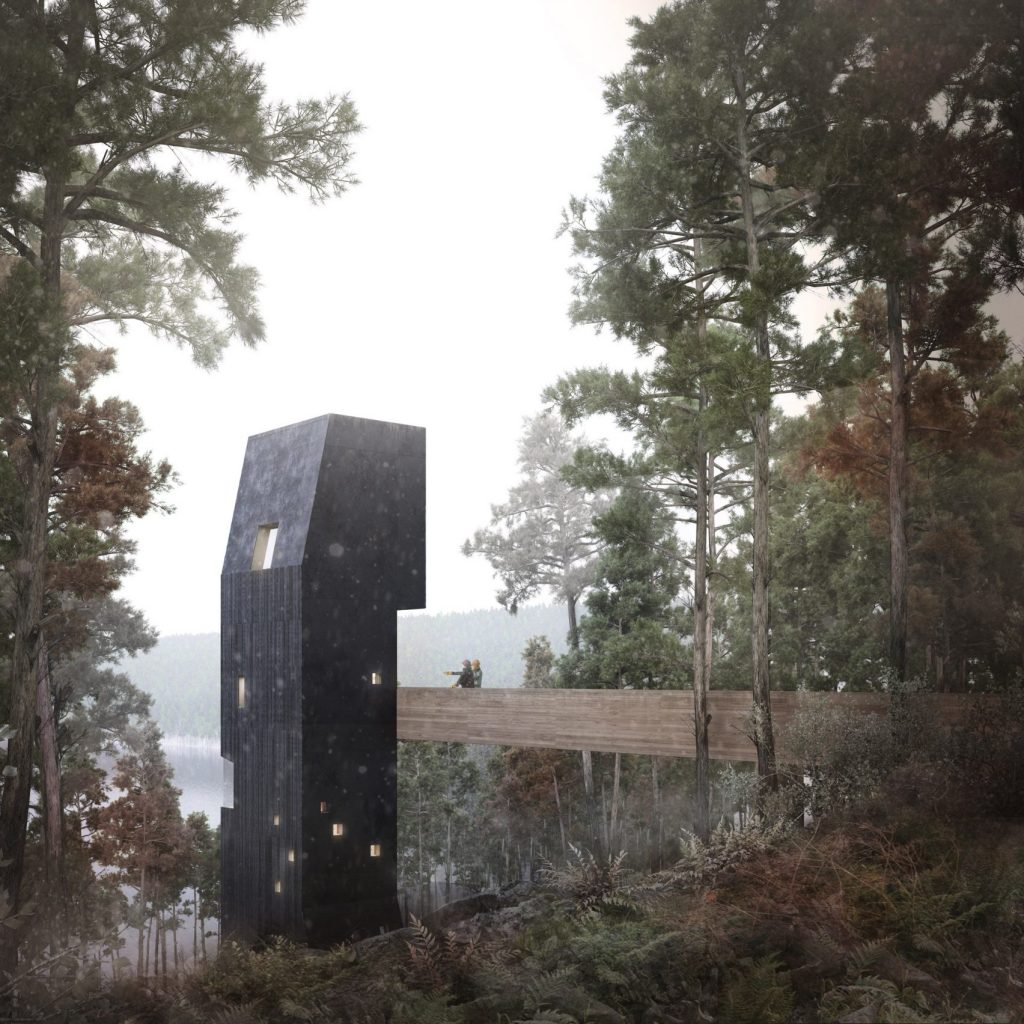
Eyrie Tower at Inverewe Garden by Denizen Works
Eyrie, an observation tower with a vertical gallery and a bird hide, has been proposed by the London-based architects Denizen Works in response to the brief by the National Trust for Scotland to draw more visitors to Inverewe Garden, one of the UK’s best botanical gardens world-renowned for the breadth of its collection of trees, plants and flowers. Getting its name from a large nest of a bird of prey, the tower will stand at 20-metres tall to function as a landmark and orientation point encouraging visitors into the garden’s outer reaches. Its completion is slated for summer 2020.
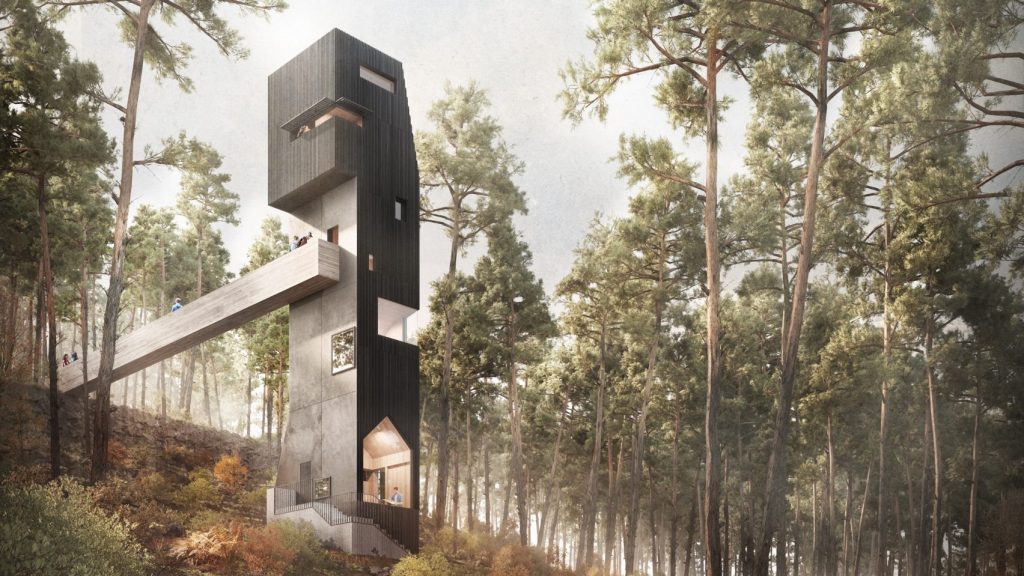
Eyrie Tower at Inverewe Garden by Denizen Works
The team has created an experience integrated into the natural route through the garden landscape, according to which visitors will follow a path down the natural contours of the slope before crossing a short bridge to the tower. Then they will be guided through gallery spaces at each level, telling the story of the garden and showcasing specially commissioned art, to the bird hide offering stunning views and allowing visitors to observe the local wildlife, at the top.
The choice of materials references the idea of a sliced tree trunk, with its rough and smooth faces. Dark, stained vertical larch cladding, sourced on site, contrasts with smooth pine tar. The tower’s solid base is formed from bush hammered concrete. Internally, the timber sheathing board will be left exposed, providing what Denizen Works call a warm and light counterpoint to the totemic presence of the tower.